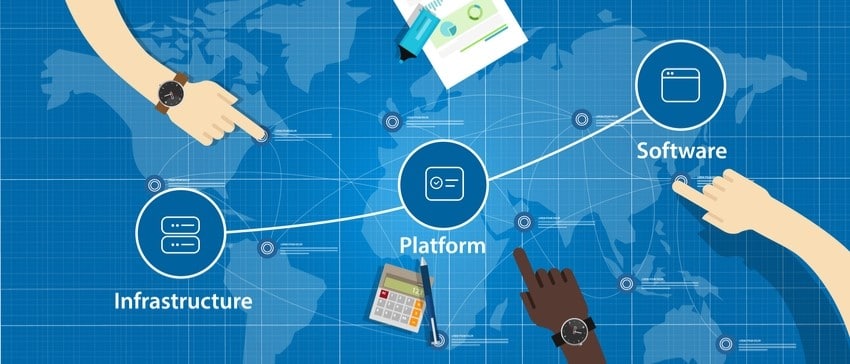Digital disruption impacts companies of all sizes and across different industries, creating new channels for partner and customer interactions. That, in turn, subverts industry dynamics and core, business models.
In a report by McKinsey and Deloitte, companies see their future viability and relevance under fire. According to Deloitte, in the next generation of digital procurement, companies will race to embrace digital technology to transform key business operations.
Procurement has largely been left out in most conversations and has not commanded the same level of attention as sales, marketing, service, and other departments or sectors. Although companies have successfully deployed e-procurement systems and cloud-based tools, it’s time to transcend beyond simply replicating tedious practices using the software.
What digital procurement seeks to do is to automate repeatable tasks and boost efficiency and potentially drive down costs. Digital procurement equips stakeholders with real-time analytics and actionable insights through artificial intelligence AI and user-friendly tools.
Steps to Successful Digital Procurement
1. Data
Data highlights everything a company can do to predict consumer needs, know which goods and services are available to meet consumer needs, and determine the right suppliers. To build and deploy a digital procurement strategy, companies must consider an intentional strategy to capture far more internal and external data than it does today.
2. Intuitive user-experiences
Without a compelling user interface, users will find an alternative way to use the digital toolbox, either by not buying from your website or figuring out another way to find products. The more intuitive and aesthetically appealing a solution is, the easier it is to build trust with your clientele. Thus the higher your chances of attracting users and converting them to people who want to continue using your products and services.
3. Implementation of a procurement software
Procurement software extends many benefits in your routine procurement planning and management processes. For instance, procurement software leads to reduced life cycle times for invoice processing, purchase orders, and other peer-to-peer workflows. Procurement software provides improved visibility and transparency across procurement. In addition, it leads to improving spend security and spend control, and supply chain optimization.
4. Technology toolbox
The technology toolbox denotes the technologies that collect and make use of data. They include natural language processing NLP, artificial intelligence AI, bots, and analytics. By collating relevant data and these advanced tools, a company can enhance and automate a wide range of processes beyond simple automation. A vital tip to implementing a successful digital procurement strategy is deploying a technology toolkit that encompasses different elements like automation and intelligence.
5. Skills and talents
Put together a cross-functional team of professionals and technicians with distinctly different skillset: business experts, AI experts, data scientists, design professionals, and IT professionals. Procurement must build skills across these functional skill sets and combine them in a manner that amplifies performance. According to McKinsey, investing in one of these skill sets is not enough, and neither is investing in all of them without a cohesive vision of how they should work together to forge the digitization journey.
Elements of a Successful Digitization Strategy
- Policies, procedures, models. Digital procurement gives stakeholders – both suppliers and company employees – ways to collaborate and interact as well as on-demand access to robust insights and data. A company must review its procedures and policies to ensure that everyone understands its responsibilities in the new procurement process.
- Blockchain. You’ve heard enough of this, right? Well, blockchain’s ability to serve as a digitally decentralized ledger holds potential for verification, monitoring, and transcription activities – all of which are important to the source-to-pay journey.
- AI-driven automation. AI-driven automation is a central component of any successful digital procurement strategy. The application programming interface API is a platform or software intermediary that allows two applications to communicate.
- Determining business needs. A successful digitization strategy must accurately define and address your business needs. This strategy must align with your business vision, mission; and fulfill short and long-term business needs.
Benefits of a Digital Procurement Strategy
- Costs. Effective management of procurement processes will enable your enterprise to lower costs by procuring services, supplies, and contracts at the best rates.
- Efficiency. When an organization has a fully functional procurement process, it results in quality services and products being delivered in time. This also helps enterprises to find solutions to unprecedented business problems.
- Innovation. An efficient procurement process helps with innovation. Due to stiff competition, businesses seek any competitive advantage to make their services or products better.
ProcurePort – A New Kind of Supply Chain Transparency
Advancements and disruptions in technology have ushered in a new age of business transparency most desired by consumers and stakeholders at large. As supply chain and procurement networks become complicated, and risks become larger, the visibility of the supply chain is drawn to the periphery.
Globalization has posed procurement teams with a double-edged sword. On one side, to source products and services from anywhere across the globe. On the other, to save money and time while doing so. But as the physical barrier between the buyer and the seller grows, so does the gap in ensuring transparency, accountability, and good governance.
Procurement solution providers like ProcurePort are helping businesses overcome contemporary supply chain problems by extending their automation and business intelligence capabilities. Automation solutions replicate monotonous work and processes, while business intelligence predicts and prioritizes procurement processes.
Contact ProcurePort to transform your digital procurement strategy.










